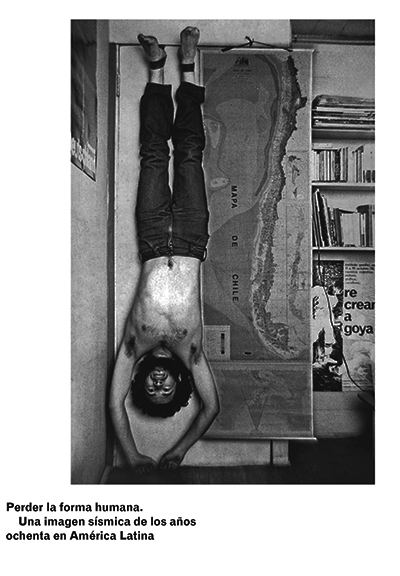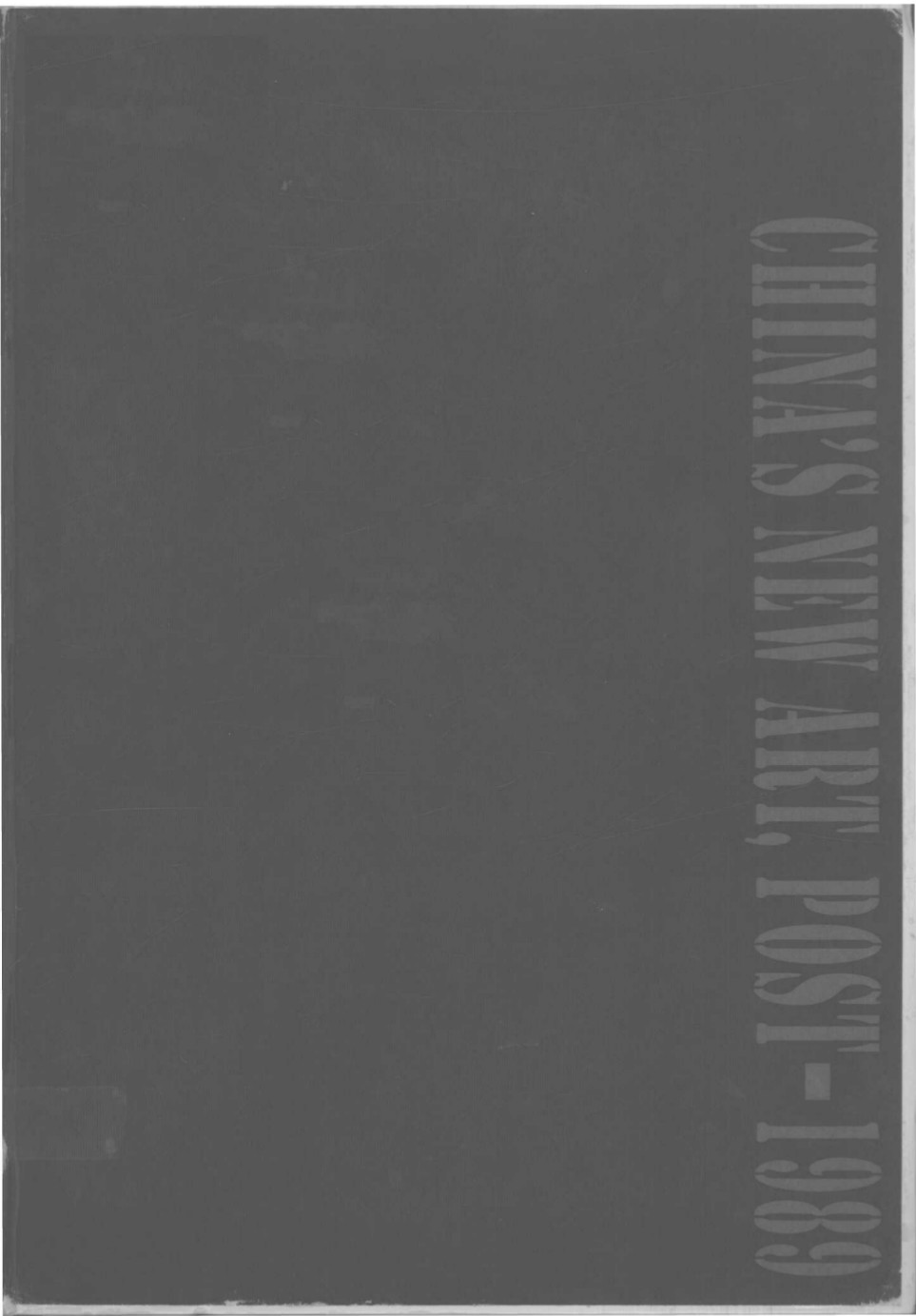Perder la forma humana: una imagen sísmica de los años ochenta en América Latina (2012) [Spanish]
Filed under book | Tags: · 1980s, activism, art history, glossary, latin america

“A glossary tends to be part of an annex appearing at the end of a publication. This book has inverted this logic and structured the entire publication around this tool. The publication is seen as a system that articulates – through relationships of affinity and contagion – a set of key concepts derived from both the lexicon of words and expressions coined by activists and artists during those years and from the anachronistic exercise of reframing these experiences in the light of the present. Each concept incites us to think about those practices, those ways of doing things in art and the politics of the experiences explored. The entries contain references to other categories in the glossary, in which the same experience or common practices can be approached from other perspectives. Furthermore, each entry is accompanied by abundant graphic material, photos and writings from the period, thus forming a profuse and polyphonic documentary base. These key concepts are intended to function as spearheads which, by traversing the material memory of these practices (documents and works of art) and also their immaterial memory (testimonies), give rise to new meanings.”
Published to accompany the exhibition Perder la forma humana [Losing the Human Form. A Seismic Image of the 1980s in Latin America].
“El proyecto editorial Perder la forma humana, ha sido concebido en articulación y diálogo con la propuesta expositiva de igual título. En este sentido, y a diferencia de un catálogo convencional, la publicación no restablece de manera enumerativa trabajos y prácticas presentes en la exposición, sino que se presenta como otro dispositivo (posible) de activación de esas prácticas en una reflexión sobre el presente.
Un glosario suele ser parte de un anexo que se incluye al final de una publicación. Este libro propone invertir esta lógica y estructurar toda la edición en torno a esta herramienta. Es así que la publicación se piensa como un sistema donde se articulan, en relaciones de afinidades y contagios, un conjunto de conceptos clave derivados tanto del léxico acuñado durante aquellos años por activistas y artistas como del ejercicio anacrónico de re-enmarcar estas experiencias a la luz del presente. Cada concepto constituye una entrada para pensar las prácticas, los modos de hacer arte y políticas de las experiencias investigadas. Las entradas contienen referencias a otras categorías del glosario, donde una misma experiencia o prácticas afines pueden ser enfocadas desde otras perspectivas. Por otro lado, cada entrada se completa con abundante material gráfico, fotos y escritos de época, formando una base documental profusa y polifónica. Estos conceptos clave aspiran, en definitiva, a funcionar como puntas de lanza que, al atravesar la memoria material (documentos y obras) e inmaterial (testimonios) de esas prácticas, propongan nuevas tramas de sentido.”
Edited by Red Conceptualismos del Sur
Publisher Museo Nacional Centro de Arte Reina Sofía, Madrid, 2012
ISBN 9788480264624
280 pages
Reviews: Juan Vicente Aliaga (Critique d’art 2012 FR), Horacio Ramos Cerna (Illapa 2013 ES).
Editors
Exhibition (EN)
Exhibition
Exhibition (Museo de Arte de Lima, Peru, 2014)
WorldCat
PDF, PDF (9 MB)
Portuguese trans. of Introduction
Wu Hung: Transience: Chinese Experimental Art at the End of the Twentieth Century (1999)
Filed under book, catalogue | Tags: · 1980s, 1990s, art, art history, china, contemporary art

“In a novel approach to avant-garde Chinese art, the 1999 exhibition Transience established a historical framework for current artistic production in China. Organized by the David and Alfred Smart Museum of Art at the University of Chicago, the show and its catalog highlighted the diverse responses of twenty-two artists to China’s recent history and current social transformation.
Written by Wu Hung, a leading authority and the curator of the exhibit, Transience explores contemporary Chinese art through the themes of demystification, ruins, and transience, and represents an original perspective in the continuing discussion on Chinese experimental art.”
Publisher David and Alfred Smart Museum of Art, University of Chicago, 1999
ISBN 0935573275, 9780935573275
214 pages
Reviews: Julia F. Andrews (CAA Reviews, 2001).
Comment (0)China’s New Art, Post-1989, with a Retrospective from 1979-1989 (1993)
Filed under catalogue | Tags: · 1980s, 1990s, art, china, contemporary art, painting, sculpture

“This is the catalogue for the seminal exhibition China’s New Art Post-1989, the first major collection of Chinese experimental art to be exhibited outside of the country. It was first held in Hong Kong in 1993 and subsequently travelled to Australia and the United States.
The present catalogue offers an in-depth study of the various artistic undercurrents and general cultural sensibilities for the creation of experimental art in China during the late 1980s and the early 1990s, through 17 essays from a number of noted critics and art historians. The artists are placed and studied under various categories, namely ‘Political Pop’ (pp 1-65), ‘Cynical Realism: Irreverence and Malaise’ (67-103), ‘The Wounded Romantic Spirit’ (105-141), ‘Emotional Bondage: Fetishism and Sado-Masochism’ (143-185), ‘Ritual and Purgation: Endgame Art’ (187-201), and ‘Introspection and Retreat into Formalism: New Abstract Art’ (203-233).
As Chang Tsongzung, one of the curators of the exhibition, writes, ‘The art of the Post-1989 period was significant as it characterised the spirit of the new decade, closing the chapter of the 1980s. It was important also for the fact that it presented to the world the first major coherent overview of China’s experimental art scene, and has maintained a continuing dialogue ever since.'”
Edited by Valerie C. Doran
Publisher Hanart T Z Gallery, Hong Kong, 1993
ISBN 9627376027, 9789627376026
cvii+232 pages
See also Materials of the Future: Documenting Contemporary Chinese Art From 1980-1990 online resource.
Comment (0)
